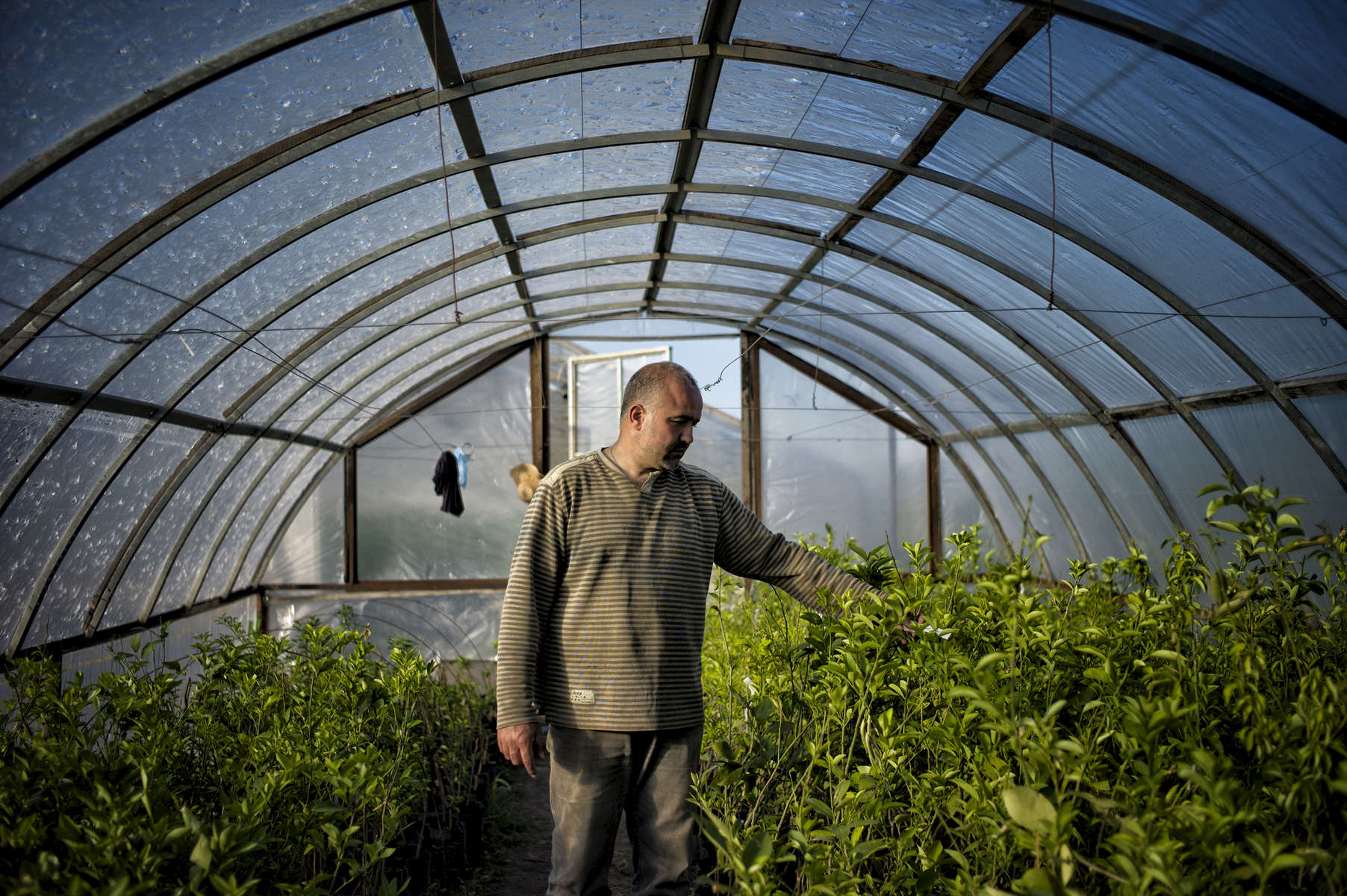Ongoing Projects: Karabakh: Մենք ենք մեր լեռները: NKR_061

June 15, 2013: BERKADZOR, NAGORNO-KARABAKH- Syrian-Armenian Vrej Esmerian walks through a greenhouse full of orange and lemon trees he has planted with his brother Hovig in Berkadzor, near the Nagorno-Karabakh capital of Stepanakert. The brothers, who are originally from Aleppo are planting 15,000 saplings of different varieties ranging from citrus trees to olive trees to flowers, pine nuts, cactuses, grapes, coffee, and laurels, in an attempt to create a new industry for the unrecognized republic. Deeply patriotic, Vrej considers this project to be his contribution to the Armenian people. Nagorno-Karabakh, which in the Soviet Union was under the control of Azerbaijan, has been a de facto independent state since the 1988-94 Karabakh War in which its secessionist ethnic-Armenian population, backed by the Republic of Armenia, fought a war against the newly independent Azerbaijan, resulting in major population shifts as Azeri residents of Karabakh fled to Azerbaijan and ethnic Armenians fled Azerbaijan for the Republic of Armenia. While the war theoretically ended in 1994, hostilities occasionally flare up, and Karabakh's final status is far from settled, with Azerbaijan referring to it as occupied territory that it hopes to regain and Armenia controlling the only actual access to the republic. As a result, the movement of Syrian refugees into the territory, although voluntary on the part of the families rather than part of a state-run plan, has the potential to be extremely controversial. Photo by Scout Tufankjian/Polaris
- Ongoing Projects
- Commissioned Work
- There is Only the Earth: Images from the Armenian Diaspora Project
- Four More Years: Obama 2012
- Egypt 2011-2012: A Year of Revolution
- Haiti 2010
- Yes We Can: Barack Obama 2006-2009
- Archive
- The Old Country- Travels in Eastern Anatolia
- 2006-2009 Obama Images
- Early Days
- The Leadup to Iowa
- New Hampshire to South Carolina
- Super Tuesday to Texas
- Mississippi to Pennsylvania
- North Carolina to the Nomination
- The Early Days of the General Election
- The Road to the Convention
- Towards the Finish Line
- The Last Days of the General Election
- Election Night
- The Inauguration
- Obama Supporters
- The Secret Service
- Images from the Middle East
- Singles
- Gaza-Summer Rains 2006
- Hamas
- Features
- Militants and the Security Forces
- Daily Life
- Private Galleries
- Books
- Contact
All content (c) 2002-2020 Scout Tufankjian except where otherwise noted. Site design © 2010-2025 Neon Sky Creative Media